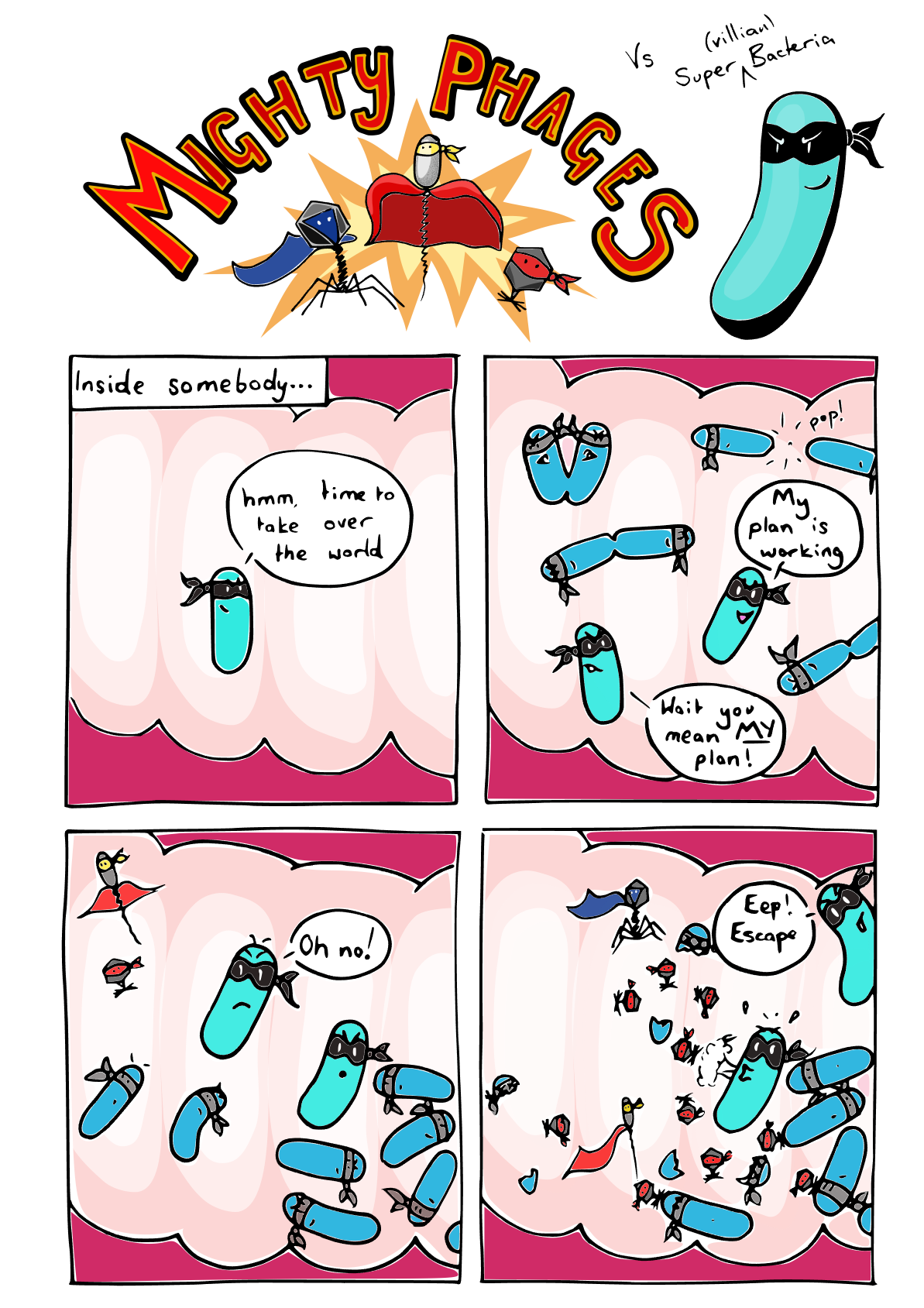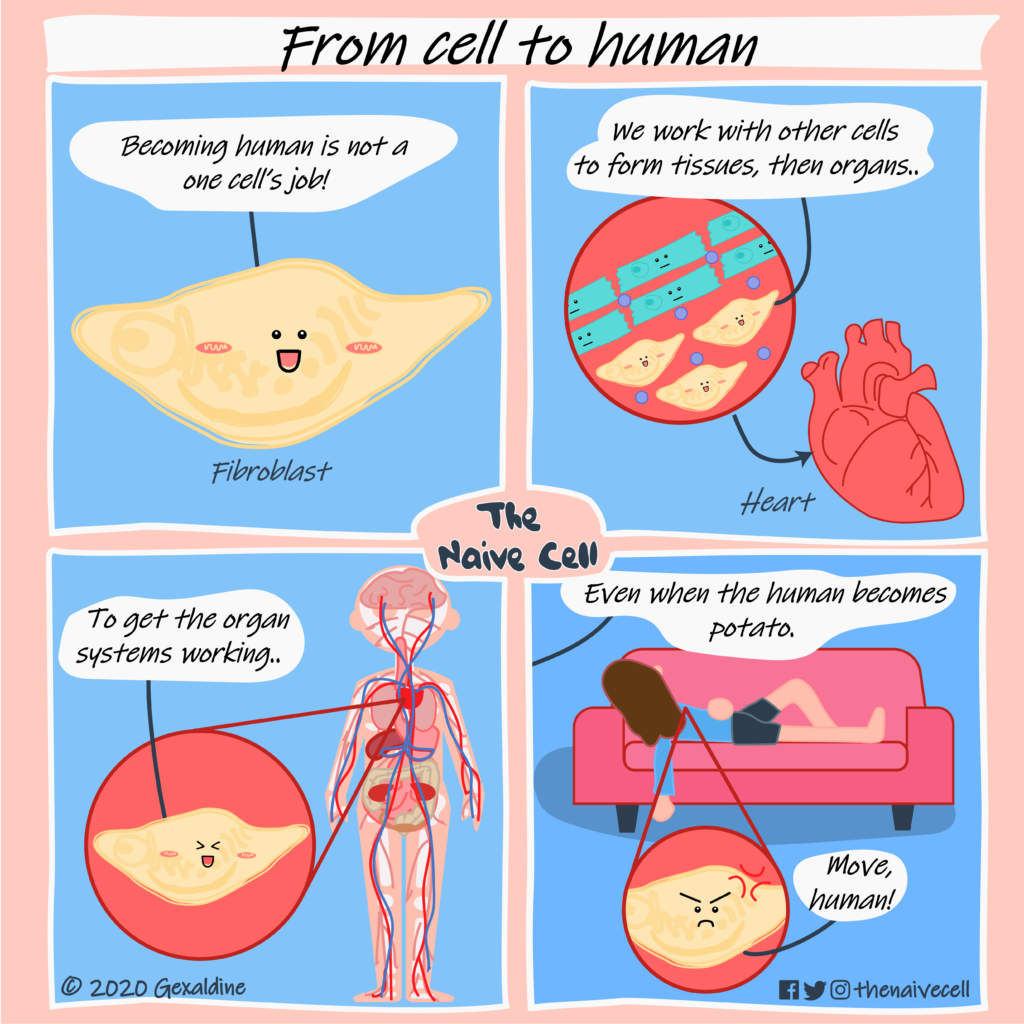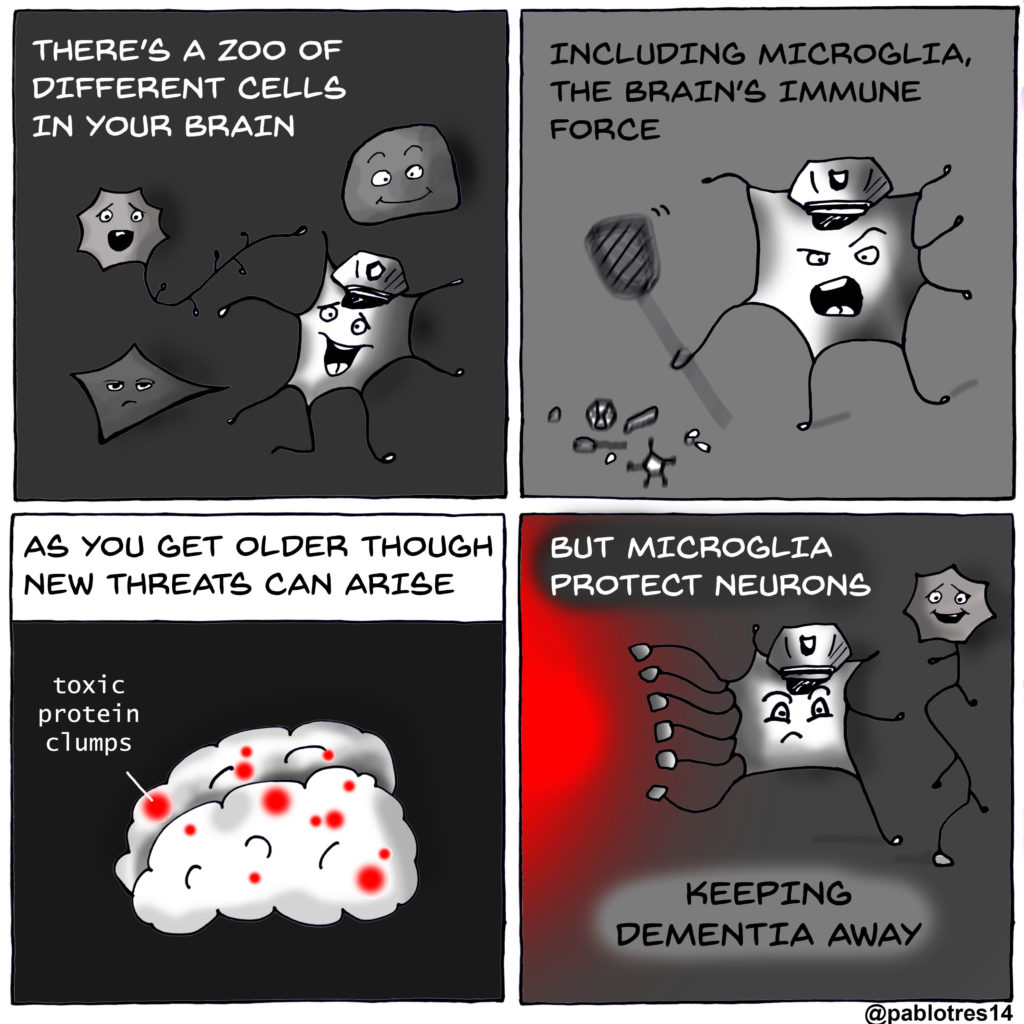For May 2020, we challenged you to create your own science comic! We received over 25 submissions! We also chose Mar’s “Pain” comic as our winner this month, and we will be publishing a Lifeology course based on an extended version of her comic!
Did you miss our May SciComm Challenge announcement? Don’t worry, we have another Challenge for June: Create your own science infographic!
Below we’ve featured many of the submitted comics, with a bit more information about them from the creators.

Comic by Dr Ellie Jameson
Phages are viruses that can kill bacteria, because they don’t harm human or animal cells they can be used in medicine to kill disease causing bacteria. They can be used on their own or with existing antibiotics to make the antibiotics more effective and help patients with antibiotic-resistant superbugs. We could all call on the Mighty Phages in the future!

Comic by Mar Flores Cortés
Pain is an unpleasant experience but its function is to protect us. We think we “feel” pain, but the thing is pain is a response we create (although not a conscious process), not something that comes from the outside or the tissues. Therefore it is influenced by our beliefs, memory, previous experiences, emotions, culture… Pain is more an alarm we need to hear, not something we should be scared of.

Comic by María Elisa
Our cells have specific types of receptors that decide what messages from the outside of the cells they share with the inside of the cells. These messages can be chemicals called ligands, here shown as triangles. In this comic, the receptors embedded in the plasma membrane of the cell have ligand-binding pockets, referred to as hats, which detect (i.e. bind) ligands. However, not all ligands bind to all pockets—this discernment is referred to as ligand binding selectivity.
Here we have a receptor with a triangle hat that binds to triangles but not rectangles, whereas the receptor with a rectangle hat is capable of binding to both rectangles and triangles. Therefore, the receptor with the rectangle hat is less selective than the one with the triangle hat. Receptor ligand binding selectivity has to do with what job the receptor performs for the cell.

Comic by Geraldine Tu
H! I’m a scientist awarded with PhD, and I’m embarking on the science communication journey using writings and arts, this is where I found a love for drawing comics!
My submitted comic: “From cell to human” is based on the first thing we learn in cell biology where cells are the basic building blocks of living things. I always find it amazing that within the human body there’s an estimate of 30 trillion cells and these cells are constantly working in the body! With the theme “Smaller than the eye can see!”, I imagined the cells being enthusiastically working hard to become human by working hand in hand with other cells to form our tissues, our organs, our organ systems, and finally the human. This is where I added the twist on the last page & reference to myself where the human is being a potato despite the cells working hard to ‘build’ the human, hence the angry cell.
As for the process of the comic, I started doing a sketch on my little notebook when I had the idea. This is followed by research to fact check e.g. what cells are in the heart & the different kinds of organ systems. After which, I start drawing each panel on Adobe Illustrator with the help of pictures as references. During the process, I will test out the different colours, change the lines that the cell says & the positions of the images to see which placement is more appropriate. Then voila! The comic is done! Hope you all liked the comic!

Comic by Matt Griffiths
I come from a family of scientists and am the artistic ‘black sheep’ of the family. As I’ve gotten older I’ve gotten more and more into science, mostly in terms of getting a better understanding of the world and my place in it. I’ve also started to work in the science field, doing graphic visualisations of research for example. My sister, Melinda, has four different science-related degrees, completed (remarkably) in four different faculties. This means that her scientific understanding is quite broad. We haven’t worked together much before, but our temperaments are very similar so we have a good understanding of each other.
When I saw the Science Comic challenge I knew I should go to her with my idea. We wanted to be relevant; the current Coronavirus crisis immediately sprang to mind. Something so tiny that we can’t even see it is causing so much damage. Part of that damage is precisely because it is so tiny: many people can’t comprehend that it can be in the air they are breathing or on a surface they are touching.
The realisation that size is relative is something that keeps coming back to me. As humans, we often think that we’re quite important and forget how tiny we are in the universe. We also forget how we’re actually composed of billions of tiny things, including millions of bacteria which aren’t ‘us’. This is where the potential for some humour comes in: as a tiny virus spreads inside and between us, we are the tiny virus spreading across the earth.
The initial process involved a bit of back and forth with sketches, trying to lock down the idea. I then did some painting and created the first draft. Only then did it become clear that the flow of information wasn’t quite working. There was a lot of feedback from Melinda and adjusting and trying out different ways of laying out the comic. There was also a lot of simplifying as we were trying to do too much initially. Changing, and then changing again, and again, can be quite frustrating, but it’s part of the process of reaching an end product that works well. I still feel like the concept of the comic could be reimagined in a better way, but we had to draw the line somewhere and say we were done!
We haven’t done a lot of this sort of work together before but we’ll definitely be doing more. It can be really good to work with someone who has an understanding of you, and knows when to push and when to give space.

Comic by Dr. Manasi Pethe
The inspiration for the comic is a little bit embarrassing – it was that I’m rewatching the Big Bang theory and I spent a whole episode literally retrieving a pin out of my head, one that I didn’t even know that I had there!

Comic by Pablo Izquierdo
I am a biochemist and a science communicator. I am also finishing a PhD in neuroscience looking at how microglia – the immune cells of the brain – work. We tend to think our brain is just a bunch of neurons linked together, but there’s many more types of cells in there. Microglia are obviously really cool: They can move around the brain and fight off threats to keep it healthy. I drew this on a paper scrap and colored it digitally.

Comic by Tricia Skelton
I was inspired to make the comic after seeing many people spreading misinformation about masks being pointless or even harmful. My hope with it is to provide people with a simple understanding of why you should be wearing a mask out in public. I made the comic just using pen and paper!
I’m a student at McMaster University in Ontario, entering my 4th year studying Psychology, Neuroscience, and Behaviour. I mainly research animal behaviour at school but I have an interest in all science. Art is one of my hobbies, so I like finding ways to integrate art and science.

Comic by Philippa Steinberg
I created this comic as a small guide to how to read cladograms and evolutionary trees. Inspired by a class I took this semester.

Comic by Sarah Nason
I decided to do a little comic about rotifers, little microscopic animals that are similar to tardigrades in the fact that they are found everywhere and they are near-indestructible!

Comic by Lea Pennac
Hi, I’m a PhD student in Mineral Physics working with microscopic samples in devices called diamond anvil cells in which we study the Earth. The inspiration for the comic book comes from my and my colleague need to send samples to some colleagues for synchrotron experiments.

Comic by Jo Montgomery
I saw the call from Lifeology for May’s Sci Comm challenge to create a comic. My PhD was in Neuroscience, so I immediately thought of brain cells! I just did a quick doodle on some post-it notes. I think it was supposed to be just four images, but I got a bit carried away!
I’m a scientist and teacher, so I’m always looking for ways to make scientific concepts understandable and accessible and I think images are really powerful in helping this. I’m a freelance science educator based in the UK and during lock down I’ve been supporting families, students, schools and teachers remotely by running an online science club, recording video lessons for a national organization, collating the best websites, activities and resources for home learning and posting daily science activities on social media.

Comic by The Astrogeek Comics (@theastrogeekcomics)
ASTROMETRY METHOD OF EXOPLANET DETECTION
In this method of exoplanet hunting, astronomers look for very fine displacements or wobbles in a star’s position over a long period of time which are caused by an exoplanet orbiting it. A few conditions for this method to be practical are that since gravity depends on mass and distance, the planet should be close to its host star and be massive enough to cause the star to shake. Lighter stars would respond to this more. This would hence work for Hot Jupiters around Red Dwarfs.
To date, only one planet has been found using this method because of the sensitivity required to make it an effective way. Future telescopes with better resolving power and sharper view might prove much better at this.
See more great comic submissions below!












